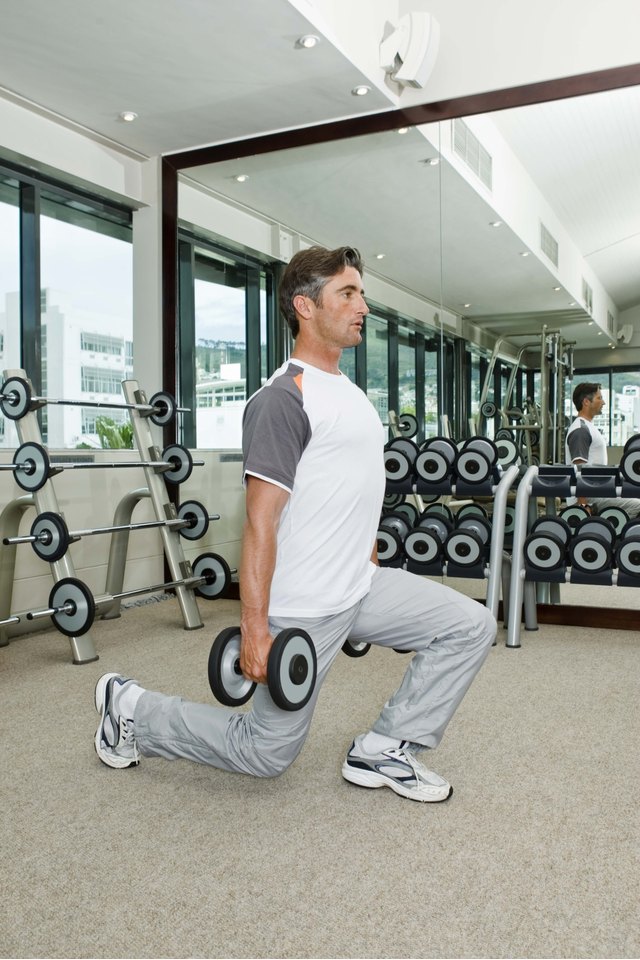What Muscle Groups Do Walking Lunges Work?

Walking lunges are the double-edged sword in fitness. They are one of the most beneficial exercises in terms of building strength, stability and endurance, but they are also one of the most dreaded because they are difficult. Walking lunges are a functional exercise, because they mimic activities that you do daily, such as squatting to pick up something and walking up or down stairs. Incorporate walking lunges into your weekly exercise routine, and watch your legs define and develop.
Technique
To do a walking lunge correctly, take a big step forward with your right foot in line with your right hip. Bend both knees, so your left knee comes within a few inches of the floor. Keep your right knee tracking directly over your right foot. Do not allow inward or outward movement of the knee, or allow it to go in front of your toes, suggests Bodybuilding.com. Engage your right quadriceps and hamstring by pushing your foot into the floor, and then stand up to step forward onto your left foot. Continue walking lunges.
Quadriceps
Walking lunges engage the quadriceps muscles during the pushing off, or concentric, contraction, allowing you to return to a stand. They quads are composed of the vastus lateralis, vastus medialis and rectus femoris. During walking lunges, the vastus medialis and lateralis both act on the knee, stabilizing it and preventing it from injury during the push. Rectus femoris is the largest of the quad muscles and is responsible for most of the strength.
Glutes and Hamstrings
Although the quads are the major muscles involved with the pushing movement, the hamstrings and glutes eccentrically control the downward movement. They control the downward speed, slowing your descent and eventually allowing you to pause at the bottom of the exercise. Eccentric contractions are just as important as concentric contractions, because they can withstand greater muscular force, resulting in greater strength gains. This is especially important for athletes involved in football, soccer, baseball and track because stronger hamstrings directly increase sprinting speed.
Other Benefits
In addition to working every major muscle in your legs, walking lunges increase lower body stability. According to world-renowned strength coach Charles Poliquin, many people have muscle imbalances between their quadriceps and hamstrings, which can result in knee and lower back injuries. Walking lunges provide equal activation of both muscles, decreasing risk of injury. Increase stability and strength gains further by using dumbbells or barbells with your walking lunges.
References
- Bodybuilding.com: Dumbbell Lunges
- ExRx.net: Quadriceps
- Poliquin: Tip 134: Don’t Forget the Lunges -- Train with Jump and Walking Lunges to Protect Your Hamstrings and Get Faster
- Essentials of Strength Training and Conditioning; National Strength and Conditioning Association; Thomas R. Baechle and Roger W. Earle
Writer Bio
Riana Rohmann has been working for the Marine Corps doing physical training and writing fitness articles since 2008. She holds personal trainer and advanced health and fitness specialist certifications from the American Council on Exercise and a Bachelor of Science in kinesiology and exercise physiology from California State University-San Marcos.
